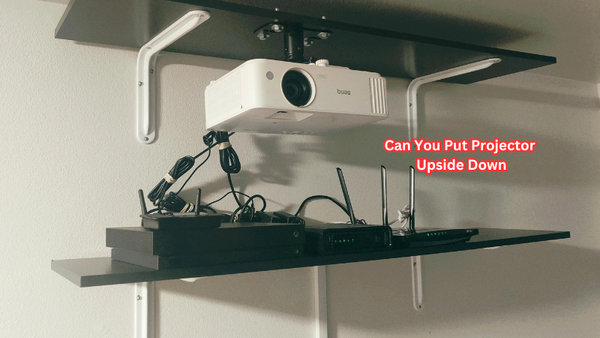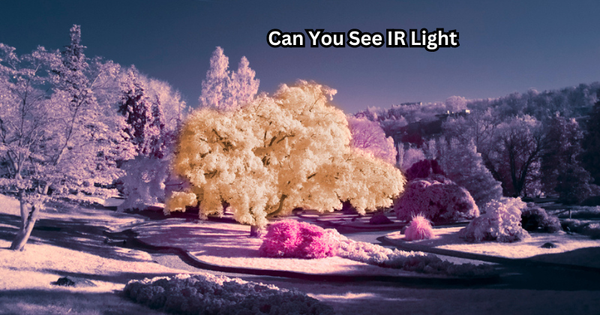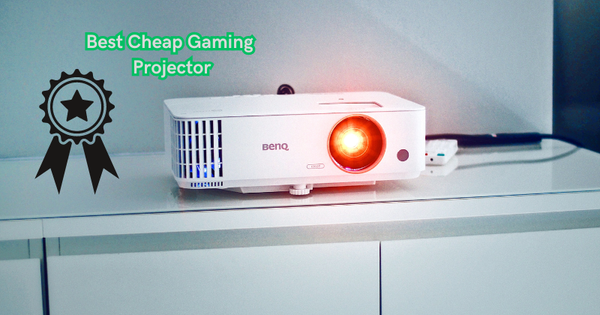Confused about the difference between lux and lumens when choosing a projector? You're not alone. This in-depth guide compares lux vs lumens to help you understand projector brightness, how each measurement works, and which one matters for your viewing needs. Perfect for home theater enthusiasts, educators, and business users looking for the best projector performance. You can learn how to spot misleading specs and make a confident, informed purchase.
What Are Lumens?
Lumens (lm) are a unit of measurement that indicates how much visible light a source emits. In the context of projectors, lumens measure overall brightness—the higher the lumen rating, the brighter the projector image will appear.
Why Lumens Matter:
Lumens help you determine whether a projector will perform well in different lighting environments. For example:
- Low-lumen projectors work best in dark rooms.
- High-lumen projectors are better for bright environments where ambient light can wash out the image.
Lumens vs Ideal Usage Environments
| Lumens | Brightness Level | Ideal For |
|---|---|---|
| < 500 lumens | Very Low | Dark rooms only, very small screens, portable projectors |
| 500–1,000 lm | Low | Small rooms with minimal light, personal use |
| 1,000–2,000 lm | Moderate | Dark to moderately lit rooms, home theaters |
| 2,000–3,000 lm | Bright | Classrooms, conference rooms, lights-on environments |
| 3,000–5,000 lm | Very Bright | Large rooms, daytime use, mixed lighting |
| 5,000+ lumens | Extremely Bright | Auditoriums, outdoor projections, professional settings |
Quick Tips:
- Home Theater in a dark room? → 1,000–2,000 lumens is usually enough.
- Business presentations? → Aim for at least 3,000 lumens.
- Outdoor movie night? → Go for 4,000–5,000+ lumens for best clarity.
What Is Lux Rating
A lux rating measures the illuminance of a surface — essentially, how much visible light is hitting a surface. The unit "lux" (lx) is part of the International System of Units (SI) and is defined as:
1 lux = 1 lumen per square meter
Breakdown:
- Lumen (lm): Total amount of visible light emitted by a source.
- Lux (lx): Lumen spread over a specific area.
Example: 1000 lumens shining on 1 square meter = 1000 lux
But 1000 lumens over 10 square meters = 100 lux
Typical Lux Ratings in Context:
| Environment | Typical Lux Level |
|---|---|
| Moonlight (full moon) | ~0.1–1 lux |
| Street lighting | 5–20 lux |
| Living room lighting | 100–300 lux |
| Office lighting | 300–500 lux |
| Classroom | 300–750 lux |
| Supermarket / Retail | 750–1000 lux |
| Surgical operating room | 10,000–100,000+ |
| Direct sunlight | ~100,000 lux |
Why Lux Rating Matters:
- In photography, it helps with proper exposure.
- In workplace design: Ensures safe and productive lighting.
- In horticulture: Used to assess plant light requirements (though PAR is often better).
- In security systems, it determines if lighting is sufficient for cameras to capture clear images.
What Is the Difference Between Lux and Lumens?
The difference between lux and lumens comes down to what you're measuring:
Lumens (lm): "How much light is produced?"
- Definition: The total amount of visible light emitted by a light source in all directions.
- Think of it as: The "brightness" coming out of the bulb.
- Example: A 1000-lumen bulb emits 1000 lumens no matter where you place it.
Lux (lx): "How much light hits a surface?"
- Definition: The amount of light per unit area (lumens per square meter).
- 1 lux = 1 lumen/m²
- Think of it as: How illuminated a surface is.
FAQ
How to convert lux to lumens?
- Measure Lux
Measure the illuminance in lux at a specific point or uniformly across an area (usually in square meters). - Determine the Area
Know the exact surface area (in m²) over which the lux measurement applies. - Apply the Formula
Use the formula:Lumens=Lux×Area (m2)\text{Lumens} = \text{Lux} \times \text{Area (m}^2)Lumens=Lux×Area (m2)
Example:
- Lux = 500 lx
- Area = 5 m²
Calculation:
500 lx×5 m2=2,500 lumens500 \, \text{lx} \times 5 \, \text{m}^2 = 2,500 \, \text{lumens}500lx×5m2=2,500lumens
Is 5000 lux the same as 5000 lumens?
No, 5000 lux is not the same as 5000 lumens — they measure different things!
What’s the difference?
- Lux (lx): Measures illuminance — how much light hits a surface, per square meter.
- Lumens (lm): Measures the total amount of light emitted by a source in all directions.
Why they’re not the same:
- 5000 lux means 5000 lumens per square meter of surface.
- To find out how many lumens total that is, you need to multiply lux by the area (in m²).
Example:
- If 5000 lux is shining on 1 m², then total lumens = 5000 × 1 = 5000 lumens.
- But if 5000 lux is shining on 2 m², total lumens = 5000 × 2 = 10,000 lumens.
Bottom line:
- Lux depends on both the lumens and the area over which light spreads.
- So, 5000 lux and 5000 lumens are only equal if the area is exactly 1 square meter.
How many lumens should a 4k projector have?
For a 4K projector, the required lumens mainly depend on the room lighting, screen size, and usage. Because 4K resolution shows more detail, having enough brightness is important to keep the image crisp and vibrant.
General Lumens Recommendations for a 4K Projector:
| Usage Scenario | Screen Size | Recommended Brightness (Lumens) |
|---|---|---|
| Home Theater (Dark Room) | Up to 120 inches | 1,500 – 2,500 lumens |
| Living Room (Some Light) | Up to 120 inches | 2,500 – 3,500 lumens |
| Bright Rooms / Office | 100+ inches | 3,500 – 5,000+ lumens |
| Large Venues / Auditorium | 150+ inches | 5,000+ lumens |
Why Brightness Matters for 4K:
- High resolution = more pixels, so brightness per pixel can drop if lumens are low.
- To maintain vivid colors and contrast, sufficient lumens are key.
- If the room has ambient light, you’ll need higher lumens to prevent washout.
Quick tip:
- For typical home use with moderate screen sizes and controlled lighting, aim for at least 2000 lumens.
- For larger screens or brighter environments, go for 3000 lumens or more.
How Many Lumens is 2500 Lux?
Lumens and lux are two distinct units used to measure light, each serving a different purpose. Lumens quantify the total visible light emitted by a source, while lux measures the amount of light illuminating a surface per unit area.
The connection between lumens and lux depends largely on the distance from the light source. As light spreads out, its intensity diminishes according to the Inverse Square Law—meaning the farther you are from the source, the lower the lux value on the surface.
To find out how many lumens are needed to achieve a certain lux level, you must consider the area you want to light and its distance from the source. The basic conversion formula is:
Lumens=Lux×Area (in square meters)\text{Lumens} = \text{Lux} \times \text{Area (in square meters)}Lumens=Lux×Area (in square meters)
This formula calculates the total luminous flux required to reach a specific illuminance. Accurate measurements of the area and distance are essential to get reliable results.
For example, if you want to light a 2-square-meter desk to an illuminance of 2500 lux, and the desk is 1 meter from the light source, the calculation would be:
Lumens=2500 lux×2 m2=5000 lumens\text{Lumens} = 2500 \, \text{lux} \times 2 \, \text{m}^2 = 5000 \, \text{lumens}Lumens=2500lux×2m2=5000lumens
In this case, you’d need a light source emitting 5000 lumens to provide 2500 lux on the desk.
Understanding how lumens relate to lux is key when choosing the right light bulb for different environments. Whether it’s creating a cozy ambiance in a living room, providing bright task lighting in a kitchen, or ensuring focused illumination in a study, knowing the required lumens to achieve the desired lux helps deliver the perfect lighting.
In workplaces, retail spaces, and offices, proper illumination is vital for productivity, safety, and customer experience. Lighting designers and architects rely on calculating the necessary lumens for a target lux level to ensure spaces are well-lit and comfortable.
This relationship also influences the atmosphere in places like restaurants, hotels, and homes. Adjusting the brightness and light intensity by controlling lumens and lux helps set the right mood for any occasion.
In summary, grasping the relationship between lumens and lux is crucial for making informed lighting decisions. By calculating the lumens needed to achieve a specific lux level, you can create effective lighting solutions that enhance comfort, safety, and ambiance, whether for workspaces, living areas, or special events.
How many lux is good for a projector?
For projectors, lux isn’t usually the main spec people look at directly — instead, brightness is measured in lumens, which tells you how much light the projector outputs.
But if you want to understand how lux relates to projector brightness on your screen, here’s a quick guide:
Recommended Lux Levels on a Projection Screen
| Use Case | Recommended Lux on Screen |
|---|---|
| Home Theater (dark room) | 50 – 150 lux |
| Classroom / Meeting Room | 150 – 300 lux |
| Office with Ambient Light | 300 – 500 lux |
| Bright Rooms / Daylight | 500+ lux |
How This Works:
- The projector’s lumen output combined with your screen size and room lighting affects how many lux actually fall on the screen.
- For example, a 2000-lumen projector projecting onto a 2 m² screen results roughly in 1000 lux (2000 lumens ÷ 2 m² = 1000 lux).
Summary:
- Lower lux (~50-150) is perfect for dark home theater setups, providing rich contrast.
- Higher lux (~300-500+) is needed in brighter rooms to keep the image clear and visible.
Which is better lux or lumens?
Whether lux or lumens is “better” depends on what you want to measure or achieve, because they serve different purposes:
Lumens
- Measure the total amount of visible light emitted by a source.
- Think of it as the overall brightness of a bulb or projector.
- Useful when comparing how much light different lamps or projectors produce.
- Example: A 1600-lumen bulb is brighter than an 800-lumen bulb.
Lux
- Measures the intensity of light on a specific surface area (lumens per square meter).
- Tells you how bright a surface or space feels.
- Useful for understanding how well-lit a room, desk, or screen is.
- Example: 500 lux on a desk means the desk surface is well illuminated.
So, which is better?
- Use lumens if you want to know how powerful a light source is.
- Use lux if you want to understand the actual brightness at a particular spot or area.
Real-world example:
- For buying a bulb or projector, lumens tell you how bright the device is.
- For setting up a workspace or lighting a room, lux helps ensure you have the right illumination where you need it.
Bottom line:
Both are important, but they measure different things. Choose lumens to compare light sources, and lux to measure how well an area is lit.





